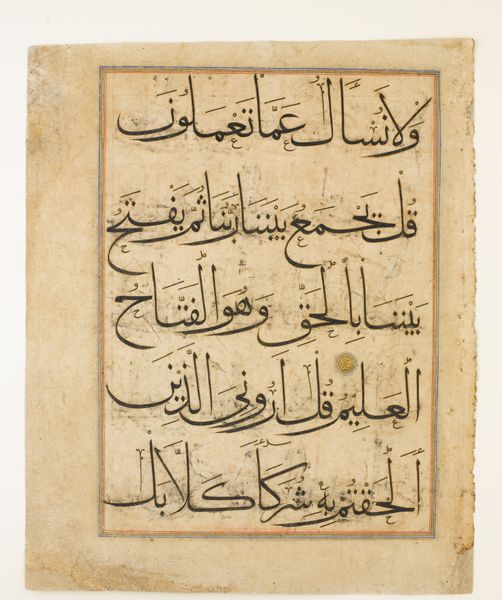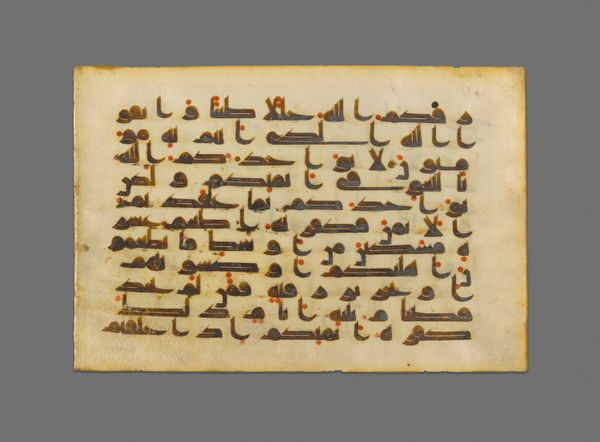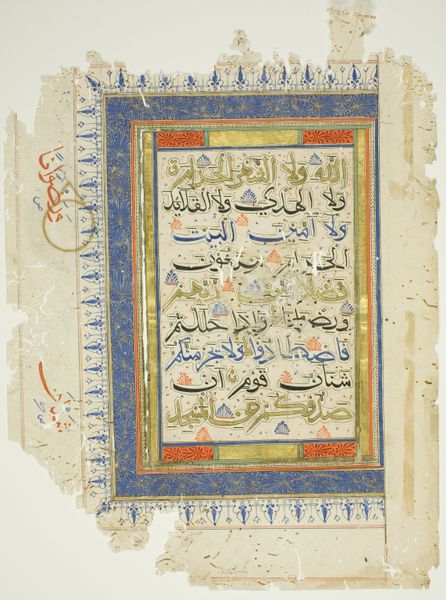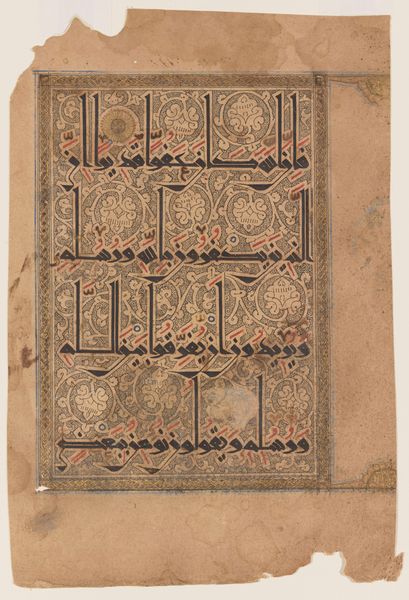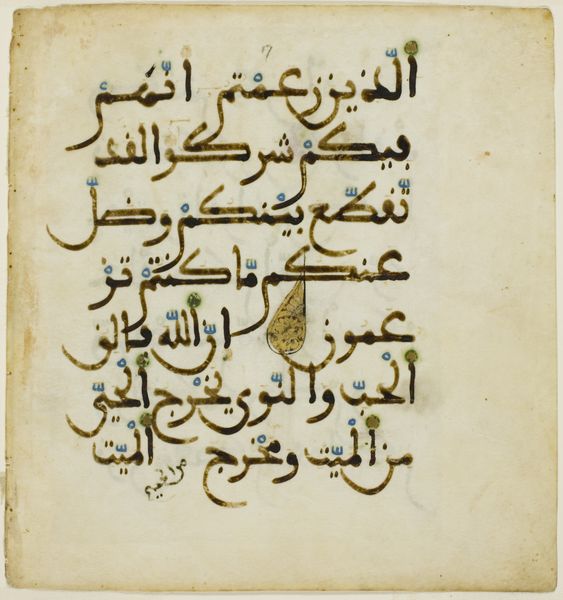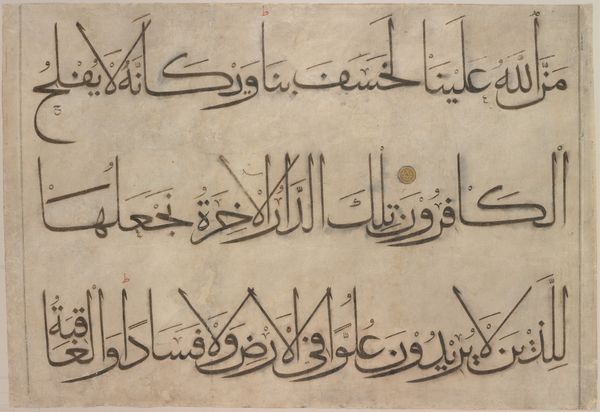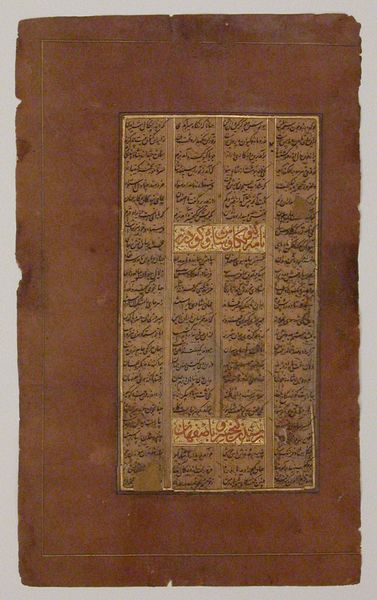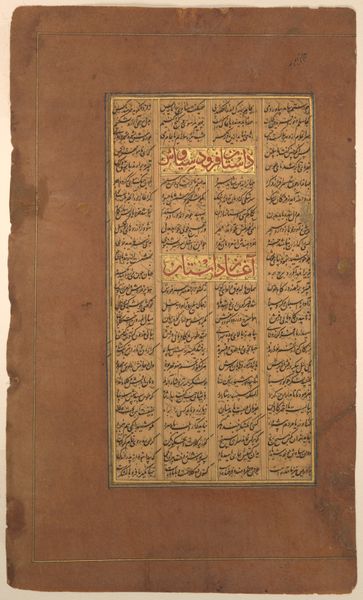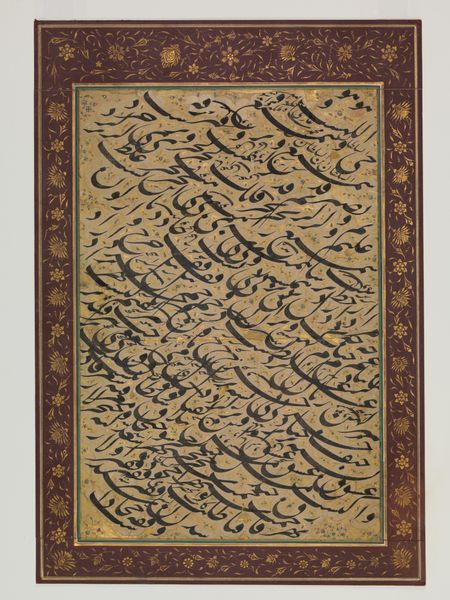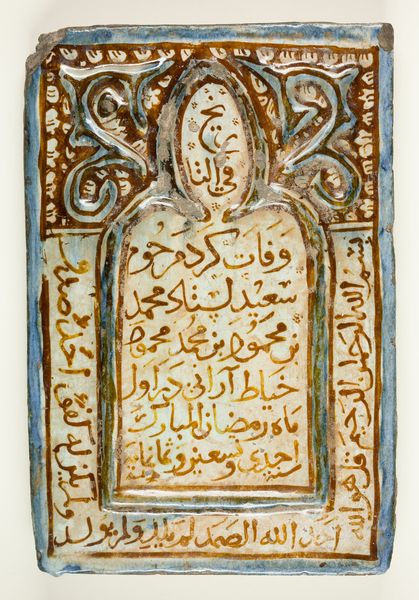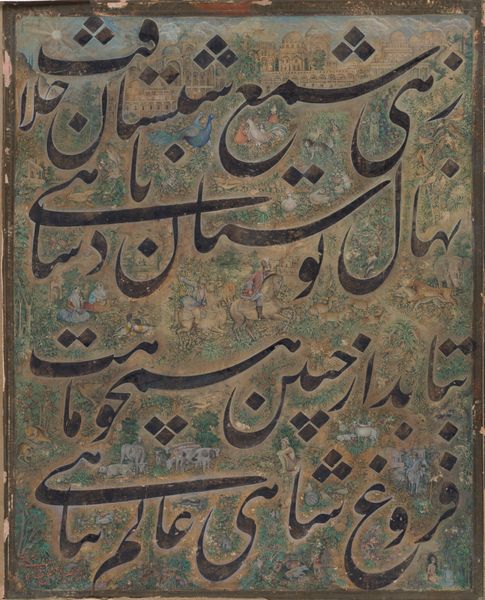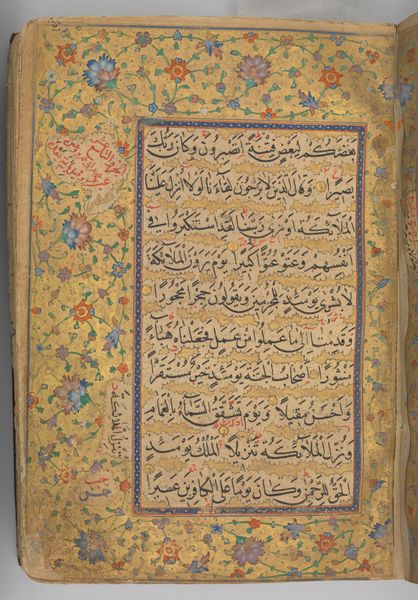
drawing, paper, ink
#
drawing
#
asian-art
#
paper
#
ink
#
organic pattern
#
geometric
#
geometric-abstraction
#
line
#
islamic-art
#
calligraphy
Copyright: Public domain
Curator: This exquisite "Calligraphy Exercise" is attributed to Ahmed Karahisari. It's executed in ink on paper. Editor: It looks so spontaneous, almost chaotic at first glance, but then you notice this undercurrent of geometrical order. The contrast between the black ink and the cream-colored paper creates an engaging visual experience, doesn't it? Curator: Indeed. The sweeping calligraphic forms are not just decorative; they carry deep cultural and spiritual weight. Think of calligraphy in Islamic art as embodying divine speech itself, rendered visible. The act of creating it becomes a devotional practice, and the abstract forms symbolize a connection to something beyond the immediately visible. Editor: That makes me wonder about the materials: the particular ink used, the sourcing of the paper. Each decision a reflection, perhaps, of available resources and the cultural value placed on the creation of sacred texts. We have here labor, material, skill intersecting to form this exercise. Was the paper specially prepared? What about the quills they were using? I bet it's quite a story! Curator: Certainly. The materials would contribute to the lasting value of such work, meant for both worldly appreciation and transcendent contemplation. And the placement of these stylized arabesques? They call to mind the dance between control and surrender during its creation. It serves to activate and awaken in ways both psychological and even deeply spiritual. Editor: A good point. But considering its existence as an "exercise," that devotional aspect you described becomes all the more interesting. The laboring of crafting, of honing technique with very specific tools and materials transforms an exercise into a possible window for contemplating skill as prayer and form. Curator: Exactly! In this sense, it isn't "just" practice, it's something of greater value. It is where meaning originates within its intended cultural context. Editor: Thinking of this in terms of labor, and of skill-building processes…it reveals an artist's engagement with materials and also allows insight into both cultural tradition and personal development. Curator: And that, perhaps, is why this "exercise" continues to move us across time and culture. It speaks to something deeply and essentially human. Editor: It transforms mundane, even quotidian objects through labor, into something much bigger. It invites you to slow down, to really examine not just its aesthetics, but also how it came to be, who made it, and under what circumstances.
Comments
No comments
Be the first to comment and join the conversation on the ultimate creative platform.

